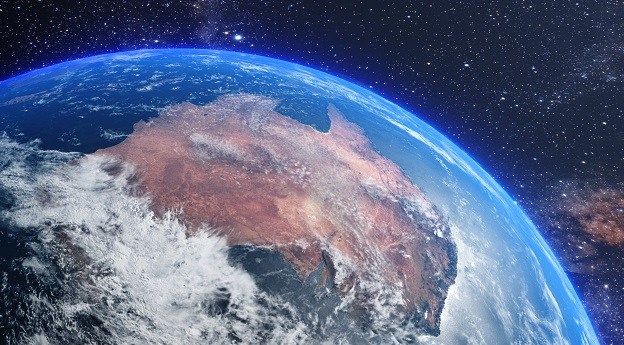
A LiDAR-derived point cloud of a group of farmers in Queensland. Image: CSIRO.
Wide-ranging partnership to tackle illegal fishing, enhance Australian agricultural productivity and analyse waterways to combat plastic waste.
A new partnership between Australia’s national science agency and Microsoft will see collaboration on artificial intelligence-based analysis of remotely sensed data on three major projects.
Under an initiative led by CSIRO principal research scientist, Dr. Denise Hardesty, will track the spread and concentration of plastic waste through Australian waterways by analysing videos of rivers and stormwater drains. Machine learning and AI will be applied to the imagery to inform strategic interventions.
“People care about the plastic pollution issue. It’s something that resonates with people whether its industry, governments, private citizens. The science that we are carrying out is answering people’s questions on how we – all together – can help resolve the plastic pollution issue,” Dr. Hardesty said.
“We will be able to count and track plastic debris and conduct quantifiable assessments of the effectiveness of waste management programs, and evaluate intervention efforts.”
The partnership is also set to boost research into new desision-making tools for farmers under development at CSIRO’s agricultural research facility at Boorowa, NSW. According to CSIRO, Microsoft Azure Farmbeats software will power new tools to tackle data-driven farming problems by integrating sensor- and satellite-derived data with domain knowledge of the agriculture sector and AI-based modelling and analytics techniques.
Dr. Dave Henry, principal research scientist at CSIRO, said that the deployment of Farmbeats has given him a new ability to visualise soil moisture and temperature across the farm in real time.
“I’ve seen images from satellites across the farm that tells me about health of vegetation. I see those being put together to interpolate or give us information on levels of soil moisture right across the farm,” he said.
“All of a sudden I’ve gone from thinking ‘there are sensors out on the farm somewhere’ to actually being able to visualise exactly what’s going on, and take actions accordingly. That’s really powerful.”
The third area of collaboration identified for the partnership is monitoring of illegal fishing activity in the Great Barrier Reef marine park and fishing with explosives in Indonesian waters. Machine learning analysis systems are being built to analyse remotely sensed data from hydrophones, radar, high resolution cameras and satellite-derived optical data.
“This partnership is turning science and technology into real-world solutions for real people, from the Great Barrier Reef, to suburban waterways, to farms and environments around the country,” Dr Marshall said.
“Everything CSIRO does is through partnerships across Australia and around the world, so it’s great to share such a broad vision for making the world a better place with a visionary partner like Microsoft.”
Stay up to date by getting stories like this delivered to your mailbox.
Sign up to receive our free weekly Spatial Source newsletter.













